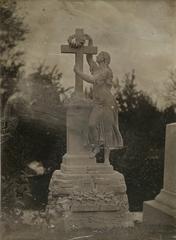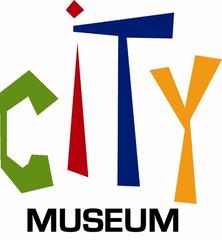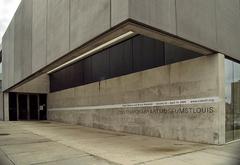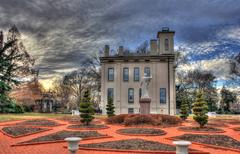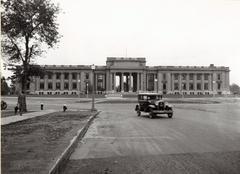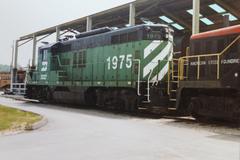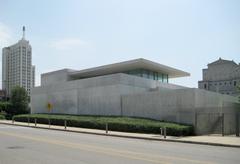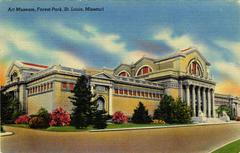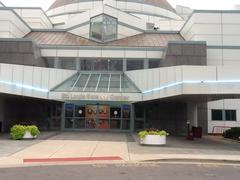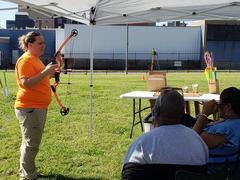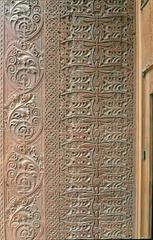
Pruitt–Igoe Visiting Hours, Tickets, and Guide to St. Louis Historical Sites
Date: 03/07/2025
Introduction: Pruitt–Igoe’s Enduring Significance
Pruitt–Igoe, once a vast public housing complex in St. Louis, Missouri, stands not only as a physical site but as a powerful symbol of the complexities of urban renewal, architectural innovation, racial segregation, and evolving social policy in 20th-century America. Designed by Minoru Yamasaki—later famous for the World Trade Center—the project initially comprised 33 eleven-story towers and was intended to house around 15,000 residents. Named after Wendell O. Pruitt, a Tuskegee Airman, and William L. Igoe, a U.S. Congressman, the complex embodied the postwar vision of federally funded urban revitalization and racial progress (africadefined.com; stlamerican.com).
However, Pruitt–Igoe’s promise was ultimately undercut by design flaws, systemic neglect, economic decline, and entrenched segregation. Its demolition between 1972 and 1977 became an international symbol of the failures of modernist architecture and top-down urban planning (atlasobscura.com; thought.is).
Today, the Pruitt–Igoe site is an open urban forest, inviting reflection on public housing, racial justice, and the resilience of communities. While no buildings remain, the area is accessible for self-guided visits and serves as a living memorial to the city’s—and the nation’s—urban history (Next City; Pruitt-Igoe Bee Sanctuary FAQ). This guide provides a detailed overview of Pruitt–Igoe’s origins, decline, present-day access, and related St. Louis historical sites.
Contents
- Early Urban Context and the Origins of Pruitt–Igoe
- Design, Construction, and Early Optimism
- Social and Economic Challenges
- Policy Failures and Systemic Racism
- The Collapse and Demolition
- Visiting Pruitt–Igoe Today
- Location and Access
- Visiting Hours and Tours
- Safety and Accessibility
- Special Events and Memorial Activities
- Nearby Historical Sites and Attractions
- Practical Visitor Tips
- Frequently Asked Questions (FAQ)
- Conclusion and Visitor Recommendations
- Sources
Early Urban Context and the Origins of Pruitt–Igoe
In postwar St. Louis, a severe housing shortage plagued the city, with over 85,000 families living in substandard conditions (africadefined.com). The Housing Act of 1949 signaled a new era of federal involvement in urban renewal, clearing slums and funding public housing. Pruitt–Igoe was conceived as a flagship project, originally planned as two segregated complexes—one for Black residents (Pruitt) and one for white residents (Igoe). Following the 1954 Brown v. Board of Education decision, the complex was desegregated, though it rapidly became predominantly African American (stlamerican.com).
Design, Construction, and Early Optimism
Built between 1951 and 1955, Pruitt–Igoe sprawled across 57 acres with 2,870 apartments in 33 high-rise buildings (atlasobscura.com). Minoru Yamasaki’s design promised “vertical neighborhoods” featuring modern amenities: indoor plumbing, electric lighting, community corridors, and landscaped grounds. The project was celebrated as a model for future public housing, offering hope to thousands of families migrating from the rural South (thought.is; stlamerican.com).
Social and Economic Challenges
The complex’s decline began almost immediately. By 1958, maintenance issues—broken elevators, faulty heating, cramped garbage chutes—were rampant (africadefined.com). The architectural vision failed to foster the expected sense of community; instead, long corridors and isolated stairwells became sites of crime and vandalism (thought.is). St. Louis’s population shrank as white flight and job loss eroded the tax base, further straining the project’s finances (africadefined.com).
By the mid-1960s, most residents were low-income Black families, and nearly 70% of the population were minors. As resources dwindled, so did social services and community support.
Policy Failures and Systemic Racism
Pruitt–Igoe’s fate was sealed by chronic underfunding and a lack of coordinated policy. Rent revenues could not sustain maintenance or security; federal and local agencies neglected the surrounding neighborhood (unseenstlouis.substack.com). Redlining and discriminatory lending practices blocked Black residents from homeownership, while urban renewal projects frequently destroyed established communities—further compounding displacement and marginalization (blackpast.org).
Public discourse often blamed residents for the project’s decline, overlooking the structural forces underpinning its failures.
The Collapse and Demolition
By the late 1960s, vandalism and neglect were rampant. Only a fraction of the buildings remained occupied, and authorities began relocating residents. The first towers were demolished by implosion in 1972, and by 1977, the entire complex was gone (en.wikipedia.org; atlasobscura.com). The cleared land became an urban forest, its stark emptiness a testament to broken promises and the lessons of failed urban policy.
Visiting Pruitt–Igoe Today
Location and Access
The Pruitt–Igoe site is located at 3860 N 14th St, St. Louis, MO 63107. It is an open, undeveloped space with no standing buildings but marked by remnants of its former infrastructure (Next City; The Tourist Checklist).
Visiting Hours and Tours
- Hours: Open daily from dawn to dusk; no entrance fee or ticket required.
- Tours: No permanent guided tours are available. However, community groups like PHACTS and former resident organizations occasionally organize memorial walks and storytelling events (Jamala Rogers). Check local event calendars and community websites for upcoming opportunities.
Safety and Accessibility
- The site features uneven terrain, dense vegetation, and lacks formal paths or facilities.
- Accessibility is limited—sturdy shoes and suitable clothing are recommended.
- There are no restrooms or water fountains; bring your own supplies.
- Street parking is available, but no dedicated parking lots.
- For safety, visit in groups during daylight hours.
Special Events and Memorial Activities
Annual events, such as the Pruitt-Igoe Memorial Walk and historic marker dedications at the Polish Heritage Center, commemorate the site’s history and promote community dialogue (Racial Harmony STL). These events often include storytelling, educational activities, and panel discussions.
Nearby Historical Sites and Attractions
- Gateway Arch National Park: Iconic symbol of St. Louis, just a short drive away.
- Old Courthouse: Site of the Dred Scott case.
- National Blues Museum: Exploring the city’s rich musical heritage.
- Mill Creek Valley: Once home to a thriving Black community before urban renewal.
- St. Stanislaus Kostka Church: Historic parish near the Pruitt–Igoe site.
- Desoto Park: Community green space reflecting neighborhood resilience.
Practical Visitor Tips
- Dress Appropriately: Wear sturdy footwear and long pants for overgrown and uneven areas.
- Bring Supplies: No facilities on-site; carry water, snacks, and sun protection.
- Respect the Site: Honor its history and avoid trespassing on adjacent private property.
- Photography: The site is ideal for urban and historical photography; note that some areas may be overgrown.
- Travel Planning: Public transportation is limited, so driving may be more convenient for most visitors.
- Events: For a more in-depth experience, time your visit to coincide with a guided walk or community event.
Frequently Asked Questions (FAQ)
Is the Pruitt–Igoe site open to the public?
Yes, it is open year-round, free of charge, with no formal infrastructure or staff.
Are guided tours available?
Occasional tours and memorial events are organized by community groups; check online for schedules.
Is the site accessible for people with disabilities?
Accessibility is limited due to uneven terrain and lack of formal pathways.
Is there parking?
Street parking is available nearby; there are no designated lots.
What should I bring when visiting?
Wear sturdy shoes, bring water, and plan to visit in daylight for safety.
Conclusion and Visitor Recommendations
A visit to the Pruitt–Igoe site offers more than a glimpse into a vanished architectural project—it provides a reflective encounter with the entwined narratives of urban policy, racial inequality, grassroots activism, and community resilience. The site’s current landscape, now a quiet urban forest, invites visitors to contemplate the legacies of public housing and the ongoing quest for social justice in American cities (Justine Petersen; Racial Harmony STL).
While the site is undeveloped, it remains open year-round and is best experienced with preparation: visit in daylight, wear appropriate footwear, and check for community events or guided tours. Exploring Pruitt–Igoe contextualizes broader histories at play in St. Louis—complemented by nearby landmarks like the Gateway Arch, Old Courthouse, and local museums (Next City; stlamerican.com).
For further resources, downloadable audio guides, and up-to-date event information, consider using mobile apps like Audiala and following local community organizations online.
Sources and Further Reading
- The Rise and Fall of Pruitt-Igoe: A Symbol of Urban Renewal’s Broken Promises – AfricanDefined
- Pruitt-Igoe Bee Sanctuary FAQ
- Reflection: St. Louis Needs to Unravel the Lessons of Pruitt-Igoe – St. Louis Public Radio
- St. Louis Pruitt-Igoe Project and Federal Agency Development – Next City
- Pruitt-Igoe Historic Celebration and Memorial Walk – St. Louis American
- About – The Pruitt-Igoe Myth Project
- JP Update: The Legacy of Bertha Gilkey – Justine Petersen
- Pruitt-Igoe Historic Marker – Racial Harmony STL
- PHACTS 2025 2nd Annual Pruitt-Igoe Memorial Walk – Jamala Rogers
- Pruitt–Igoe – Atlas Obscura
Image Suggestions:
- Historical photo of Pruitt–Igoe towers (alt: “Pruitt–Igoe historical site”)
- Current photo showing overgrown landscape and commemorative markers (alt: “St. Louis public housing site”)
- Map displaying Pruitt–Igoe’s location relative to other city landmarks (alt: “Pruitt–Igoe memorial walk and St. Louis historical sites”)
For more information, guided tours, and audio content, download the Audiala app and follow local organizations on social media.










